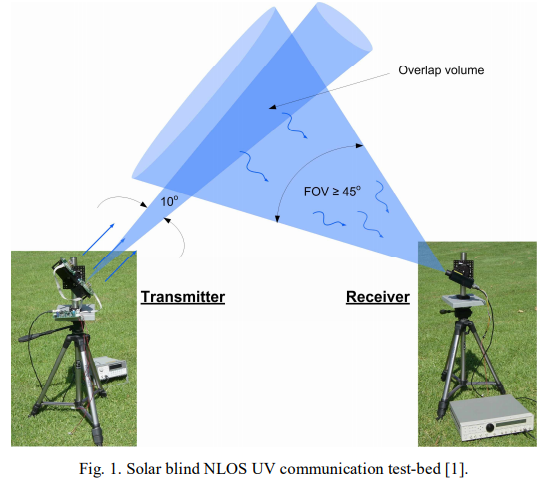An Ultraviolet Non-Line-Of-Sight system (or, UV NLOS system) is a system designed to perform short-ranged free-space optical communication using atmospheric scattering to broadcast a signal to a receiver which is not or cannot be in the line-of-sight (LOS) of its transmitter. For example, consider a receiver and transmitter communicating with one another in a straight line (i.e., by using a laser). If an obstacle, such as a building, comes between them, the LOS is lost and the communication link ceases. The link can be reestablished by using a UV NLOS system, even if the building is still between the transmitter and receiver. The link is established when the transmitter sends its signal to one side of the building while the receiver looks for the light scattered by the atmosphere, similar to looking at a search light from a concert in a distant city. UV NLOS systems use LEDs or flashlamps due to the high divergence and incoherence of the light source.
Since UV light is heavily scattered by the atmosphere through Rayleigh scattering, transmitting in UV allows for light to be observed even if the receiver is not in the LOS. This works by pointing a receiver at the “cone” of light emitted by the transmitter and scattered by the atmosphere, similar to how the human eye can see light reflected off a wall from a desk lamp even though the eye isn’t able to see the light bulb itself. This is illustrated best in the picture below.
Related Links
Paper: Experimental Evaluation of LED-Based Solar Blind UV NLOS Communication Links

